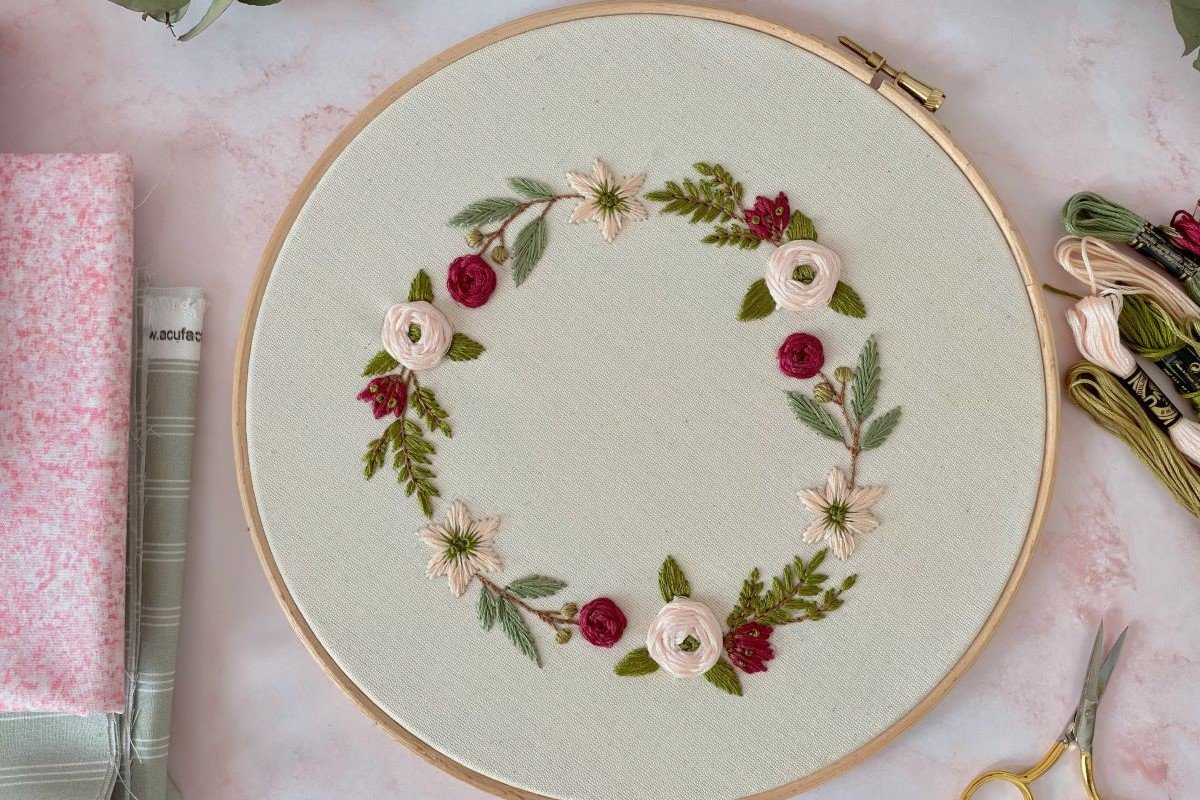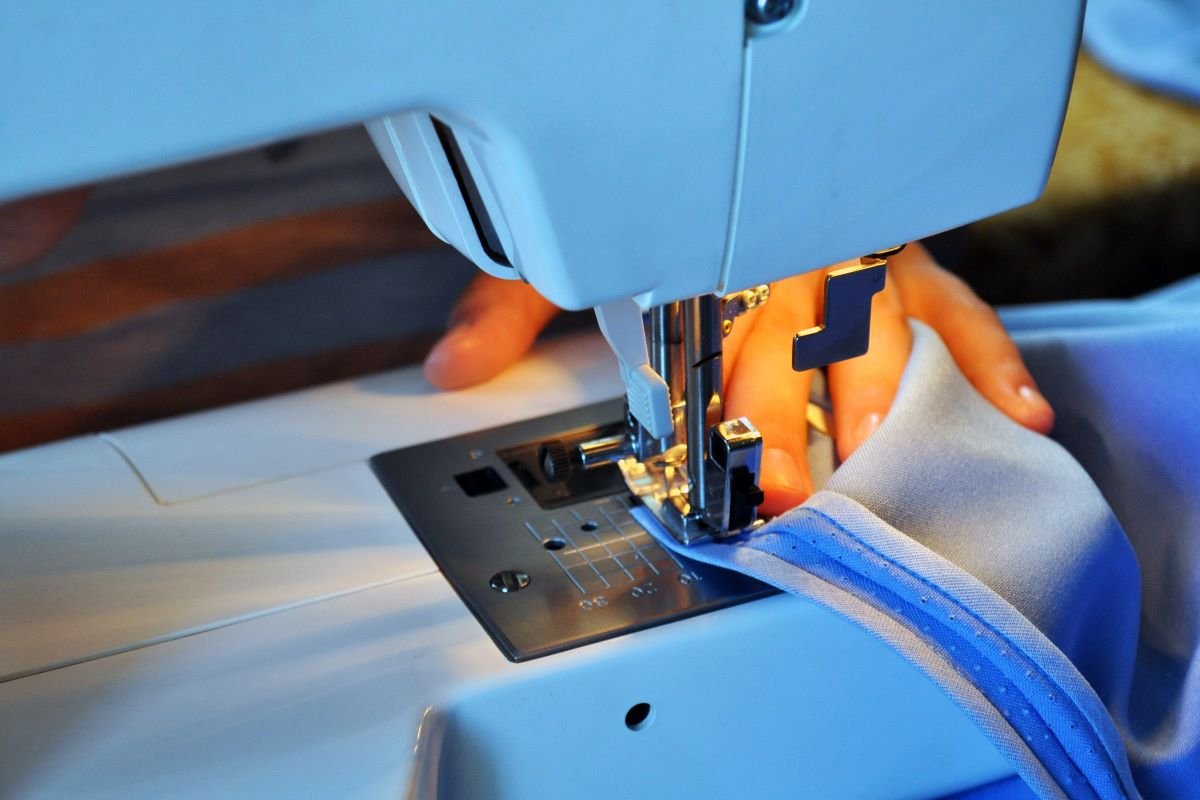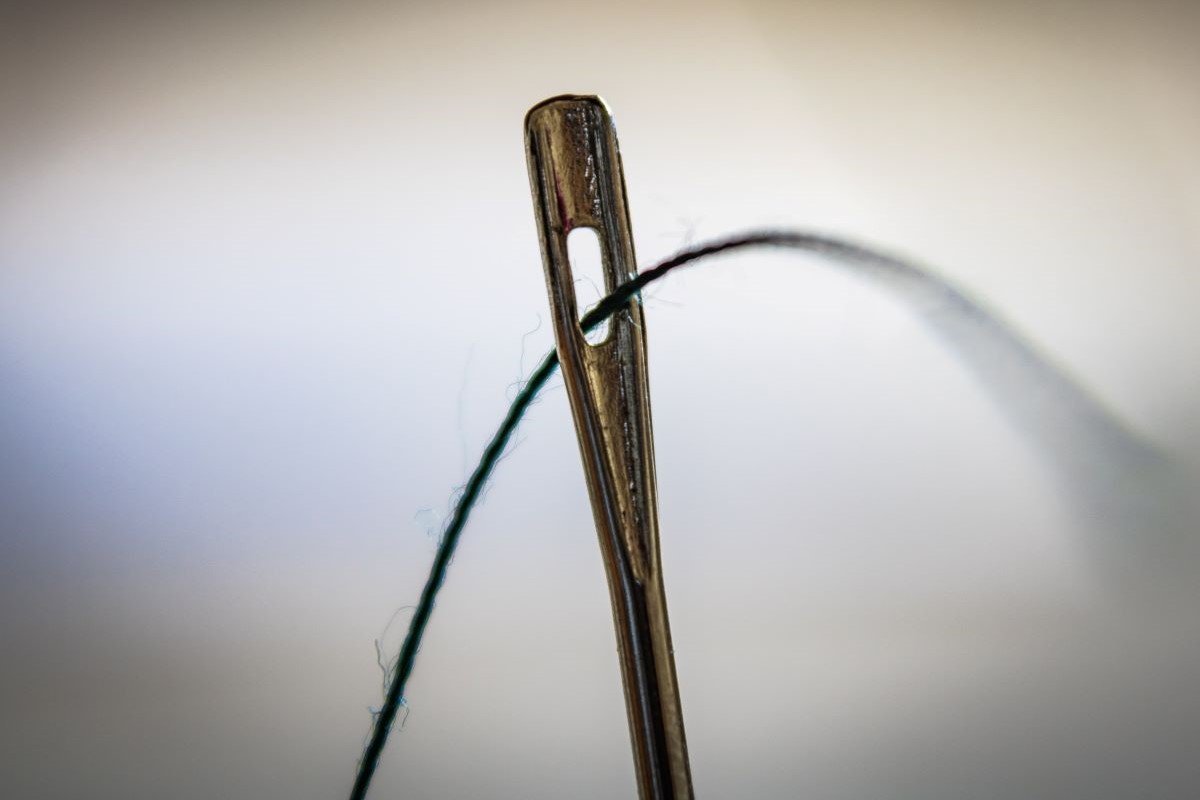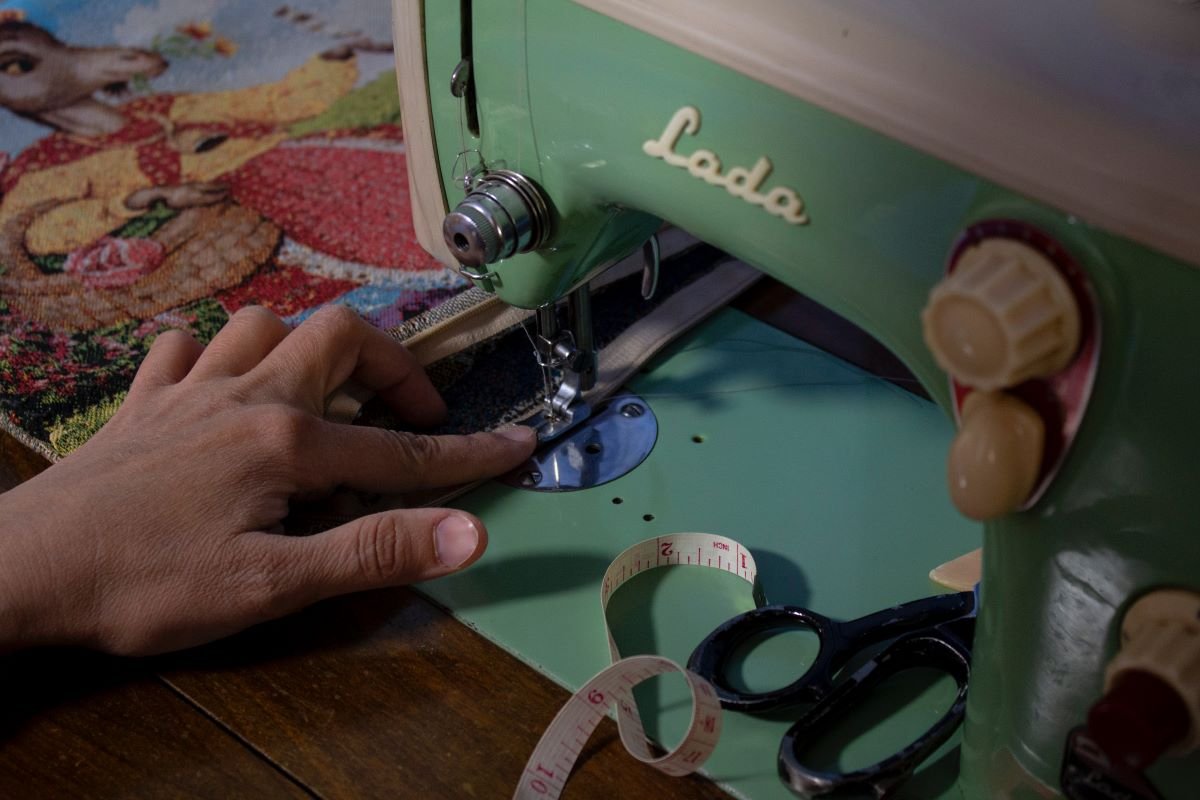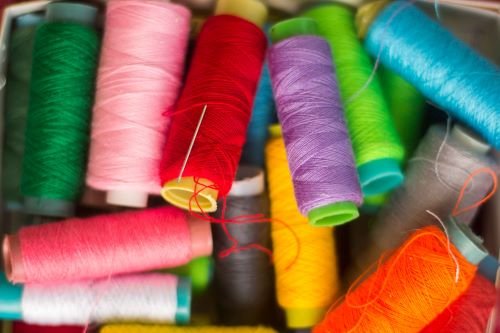How to Keep Knit Fabric From Curling

Knit fabric does not just have a tendency to curl; it lives rolled up on the edges. As knit has significant stretch, but without stability, it’s all kinds of roly-poly. Now, you want the stretch so you can avoid buttons and zippers, but how do you sew that frustrating fabric? We have the answers right here to help you tame the wild beast known as knit fabric. Take a look.
What is Knit Fabric?
Like when we knit with knitting needles and a ball of yarn, knitted fabrics are constructed from one or more long threads that intertwine and loop. It’s popular because the knitted loops allow plenty of elasticity, making it perfect for casual wear, think lounge pants or a slub shirt. Also, knits are made with a variety of fabrics including cotton, polyester, silk, viscose, wool, spandex, and more.
Different Types of Knitted Fabric
Now that you understand knit fabric let’s check out the different types to help pick the option best for you and to understand the differences.
- Stable Knits will not roll as they include only 18 to 25 percent stretch.
- Moderate Knits roll but not much, as they can stretch between 26 to 50 percent.
- Stretch Knits have a remarkable range of flexibility, from 51 to 75 percent, which will include rolling at the edges.
- Extra Stretch Knits offers tons of stretch and recovery with stretches up to 76 to 100 percent. In addition, these fabrics include a blend of latex or spandex, making them a great choice for swimsuits and leotards.
- Ribbed Knits look like knit fabric, and they offer 100 percent stretch making them a great choice for sleeves.
- Sweater Knits usually only stretches about 18 to 50 percent as it’s made of thicker yarn.
Before we go any further, you also need to understand stretch fabrics can flex their muscles in multiple ways. Some fabrics only stretch in one direction, while others can stretch in two or even four directions. The more they stretch, the more they curl. That’s just how fabric rolls.
Single-knit jersey is the most likely to curl at the fabric edges. When jersey knit stretches, the selvages typically roll toward the wrong side of the fabric, while the cut edges curl toward the “right” side. While this irritating rolling does serve to distinguish the front from the back of the cloth.
When edges roll, for instance, the usable cutting surface diminishes, and it’s more difficult to work with or cut. However, sewing with knits will be a breeze if you know how to prevent knit fabric from rolling and curling.
How to Prevent Curling
Let us discuss those notoriously difficult-to-work-with knits, those that make you want to run and hide and never use them again, or those that turn you into a sailor. A few simple tricks will get you on track. Trust us, stable fabrics may be easier to sew, but they do not have the give and the drape you want from those troublemaking knits.
Tissue Paper
While tissue paper looks great in a gift bag, it’s also going to be your new best friend when sewing knits. Knit fabrics roll because they lack spine, okay stability, and you just need to give them a little backbone. Tissue paper allows you to pin your fabric and keep it in place. Also, you can sew right through it and tear it or wash it off after. It’s so simple and gives you easy lines for a straighter finished project and less unsightly pinholes. Use this method for any unstable fabric, such as silks, chiffons, and other delicate fabrics.
Pattern Weights & Rotary Cutter
For low-curling fabrics, all you need are some pattern weights to pin the fabric together or for cutting.
Money hack: buy heavy washers from your local hardware store instead of buying ones made for sewing. They cost under a dollar each and work so very well.
This knit fabric is difficult to cut with scissors. Your finished edges will have the appearance of having been chewed by a dog. Use a rotary cutter if you want a precise cut with minimal fraying. Because jersey fabric does not tear, you will not even have to hem it to have that neat finish.
Hemming the Edges of Knit Fabric
The majority of knit textiles do not require edge finishing to avoid unraveling. However, the serging process makes the borders of the fabric heavier. The width of the serger stitch and the extra weight prevent the edges from curling and rolling in on themselves. This results in a flatter profile for the fabric.
Starch & Iron
A good pressing will remove creases from knit fabric, making it easier to cut if you use enough steam and pin immediately after ironing each area. Keep in mind you can easily burn knits or give them an unwanted sheen by ironing them at the same temperature as woven cotton. Also, the rolls cannot be totally removed by simply pressing the selvage and cut edges.
By applying a thin coat of starch to the edges of the fabric as you work to remove wrinkles can reduce rolling. You can also skip using the steam setting on your iron. The starch will dissipate with washing. Starch has been shown to be effective in removing curls from the majority of knit materials and is cheap and simple to apply.
Tiny Pins
Tiny pins hold the fabric down more firmly, allowing you the chance to keep the fabric from curling. However, this method takes a ton of patience and pins!
Interfacing
Interfacing or fabric tape can offer the stability you need to get your fabric sewn evenly. The non-elastic varieties work wonderfully as hold tape. The purpose of the stay tape is to prevent the taped area from extending. However, it is still stretchy and has the ability to stretch in the other direction, so you may move freely while wearing the top.
Stretch Stitch
If you are working with a stretchy cloth, you should use a stretch stitch. The zigzag stitch is the most popular choice for stretchy fabrics. A zigzag stitch allows the stitches to expand and contract with the fabric. While it will not prevent curling for sewing, it will prevent curling after to prevent bunching.
Final Thoughts
Curling fabric can ruin a fun plan of creativity and sewing; however, knit fabric offers stretch and drape, making it a necessary evil. While it takes a little extra work to tame a stretchy knit, it’s worth it and simple with a few methods. Also, these methods will save you money as you will end up making more accurate cuts with less damaged fabric. So move past the whining stage or annoying fabric and start sewing a t-shirt dress, correctly. Don’t worry, I whine too; just do not let it hold you back, as your wardrobe needs you.


